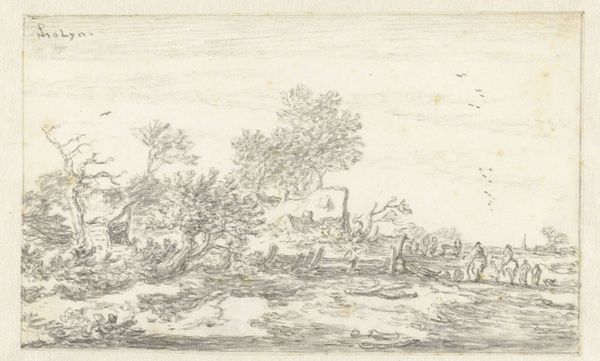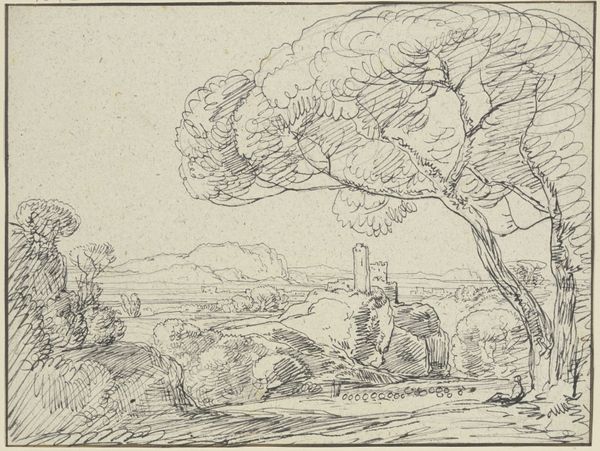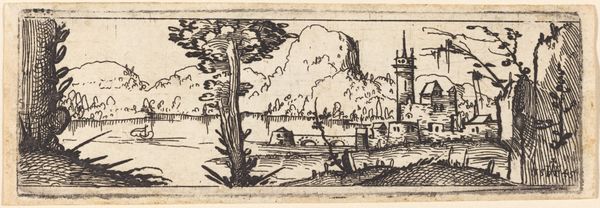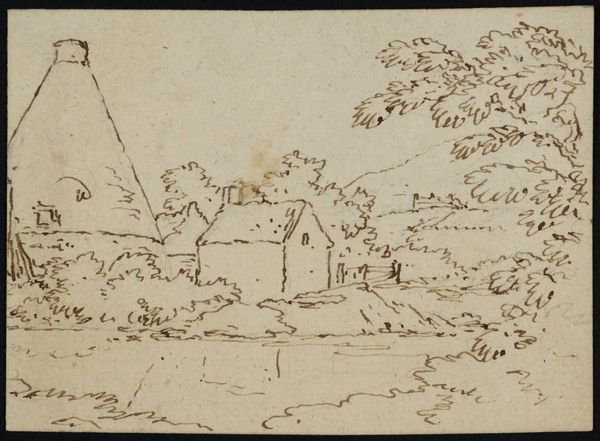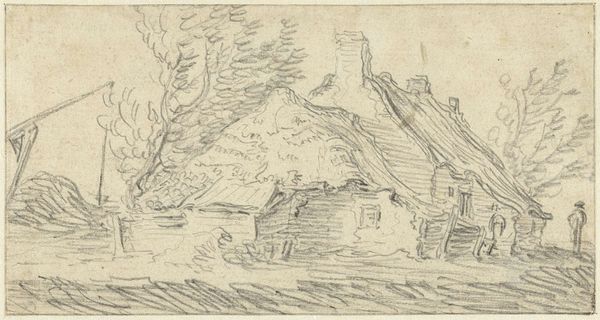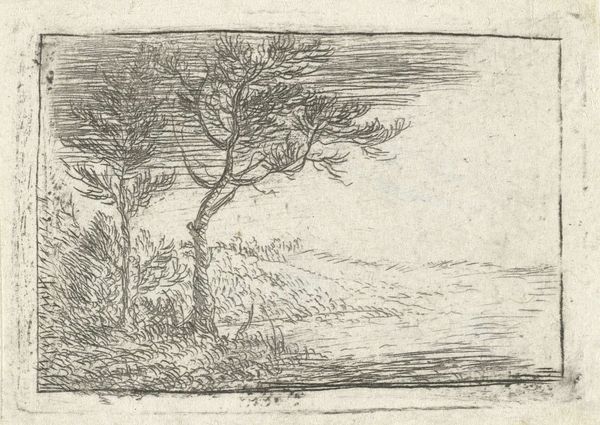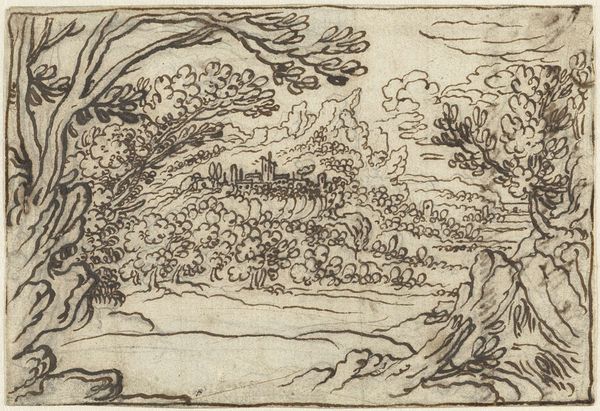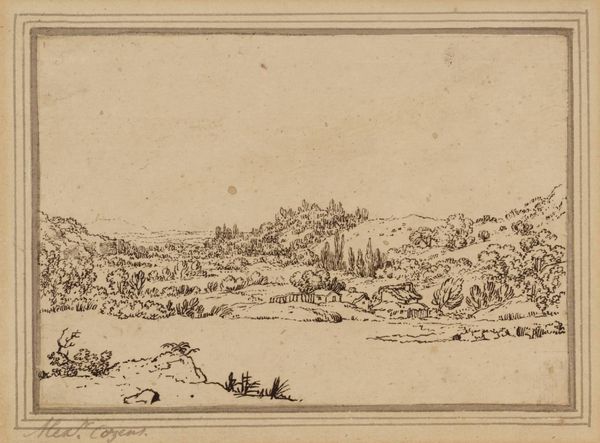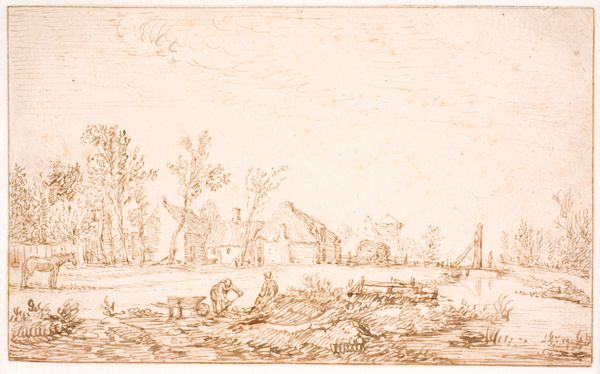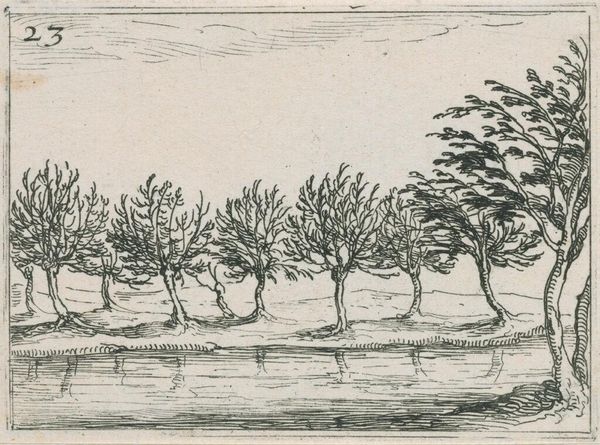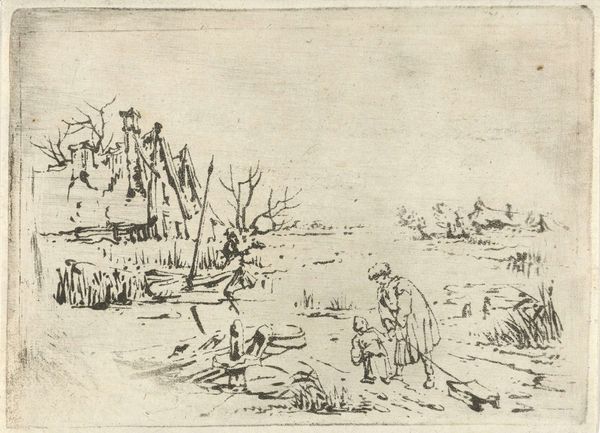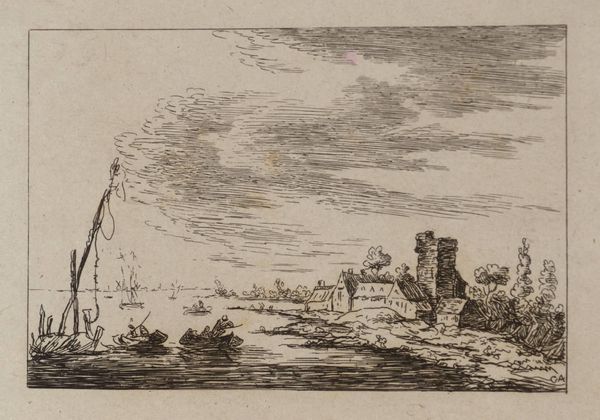
Landskab med tre høje træer ved en flodpynt 1858 - 1861
Dimensions: 123 mm (height) x 181 mm (width) (bladmaal)
Curator: Here we have Theodore Rousseau's ink drawing, "Landscape with Three Tall Trees by a River Point," created between 1858 and 1861. It's part of the collection at the SMK, the National Gallery of Denmark. What strikes you initially about it? Editor: It feels incredibly intimate, almost like glimpsing a stolen moment in nature. The lines are so delicate, yet they create a strong sense of place. There’s a kind of raw energy that makes it feel more modern than I expected. Curator: Rousseau was a key figure in the Barbizon school, a group of artists who advocated painting directly from nature. They saw the forest of Fontainebleau, near Paris, as a refuge from the rapid industrialization of the 19th century. This drawing exemplifies their commitment to portraying nature's inherent beauty. Editor: The "refuge" aspect is palpable. Look at how the trees dominate the composition, almost shielding the viewer. Is this a political statement, a form of resistance against urbanization by glorifying nature’s power and beauty? Curator: Certainly, the Barbizon painters were making a conscious choice to depict the rural over the urban. They believed in the moral and spiritual value of the natural world, a perspective that challenged the increasing dominance of industrial values in society. They aimed to illustrate the intrinsic value and importance of nature, particularly during a time of environmental transformation and urban growth. Editor: The simplicity of the ink on paper emphasizes that value. It's unadorned, almost elemental. Do you think the romantic style is trying to subtly influence opinions by presenting a subjective emotional take on the changing landscape of France? Curator: Indeed, Romanticism strongly shaped their approach, particularly with how it prioritized emotion, experience, and the awe-inspiring elements of nature. By doing so, it certainly can sway people and present this change in landscape and society with heightened sentimental emphasis. Editor: It makes you wonder what that landscape looks like now, generations later. Has it been preserved, altered, or erased? This image is a quiet testament to what’s been lost and what we still need to fight for. Curator: Rousseau and his peers advocated for the protection of forests as early environmental activists, showing that artists often occupy the front lines in discussions concerning ecology, land use, and how we perceive the interaction between humankind and nature. Editor: It encourages us to engage more intentionally in how we consider the environment around us, particularly at times when conservation continues to be overlooked, with art as a tool for political movement.
Comments
No comments
Be the first to comment and join the conversation on the ultimate creative platform.
